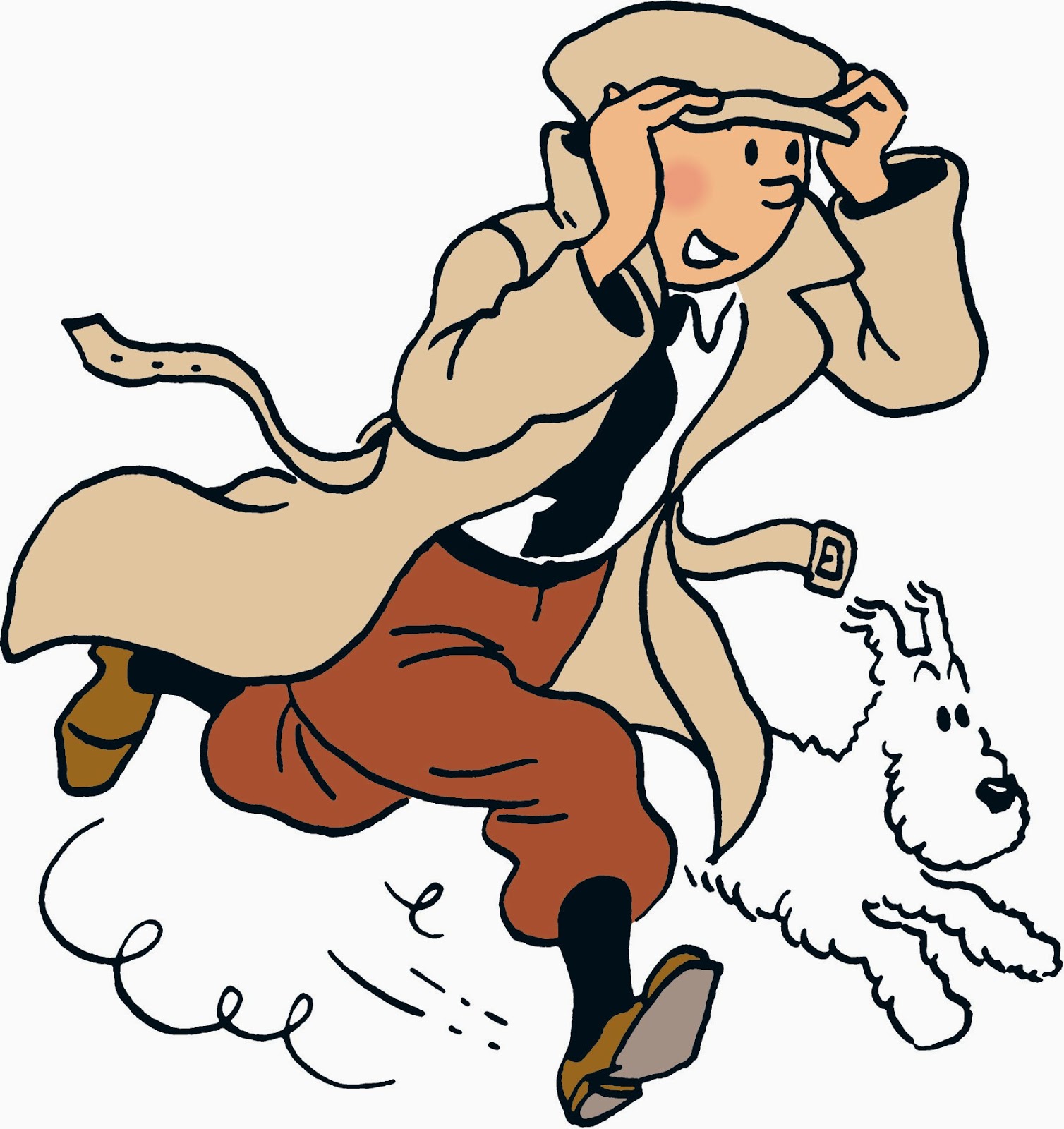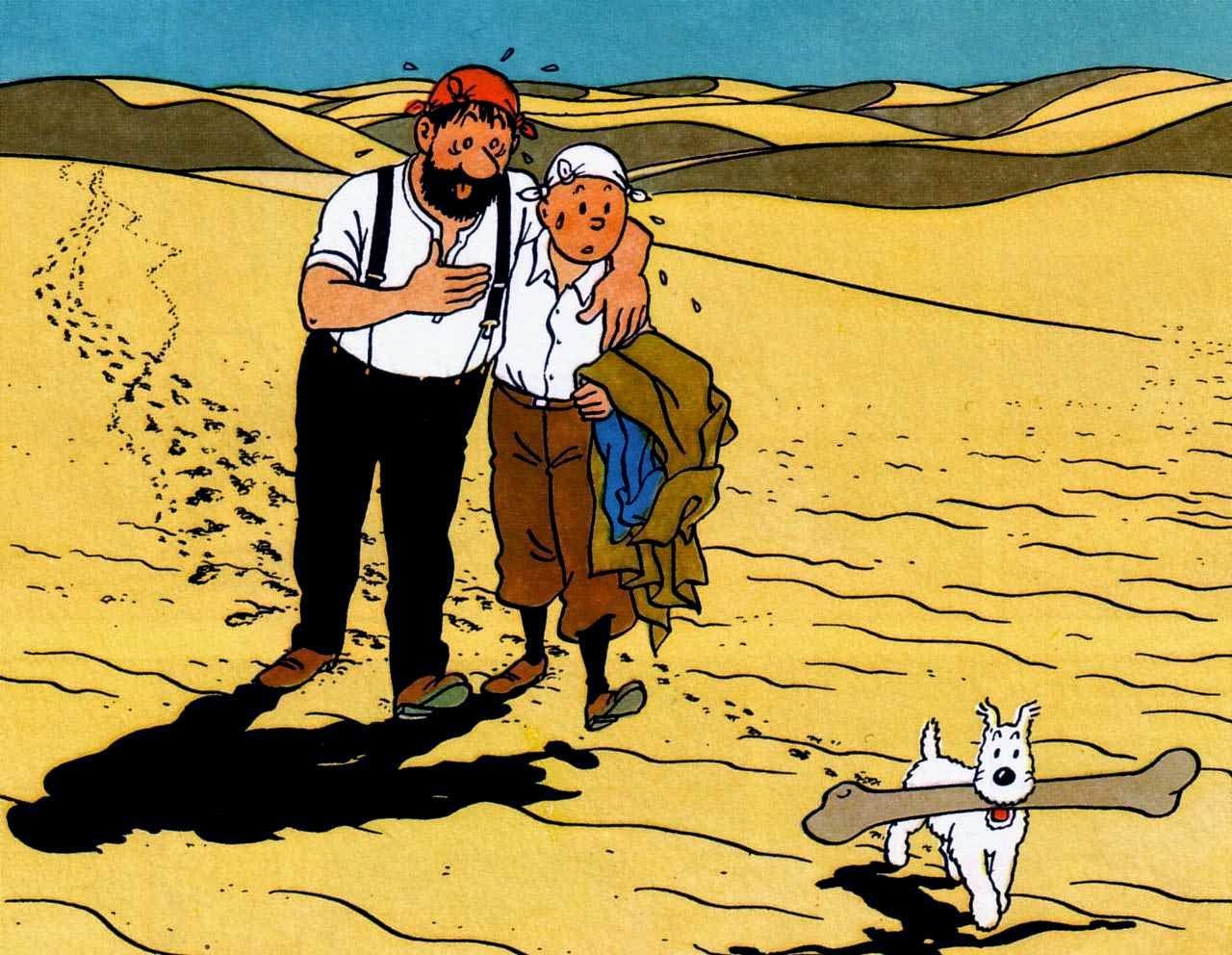Tintin Comic Character
Sunday, April 13, 2014
0
comments
Tintin Character (Review)

Tintin pronounced: [tɛ̃tɛ̃] (Dutch: Kuifje) is a fictional Character in The Adventures of Tintin, the Comics series by Belgian cartoonist Hergé. Tintin is the eponymous protagonist of the series; a reporter and adventurer who travels around the world with his dog Snowy. The character was created in 1929 and introduced in Le Petit Vingtième, a weekly youth supplement to the Belgian newspaper Le Vingtième Siècle. He appears as a young man, 14–19 years old with a round face and quiff hairstyle. Tintin has a sharp intellect, can command any type of vehicle, can defend himself, and is honest, decent, compassionate, and kind. Through his investigative reporting, quick thinking, and all-around good nature, Tintin is always able to solve the mystery and complete the adventure. More about Tintin Comic Character info - keep on reading !!
Unlike more colourful characters that he encounters, Tintin's personality is neutral, which allows the reader to not merely follow the adventures but assume Tintin's position within the story. Combined with Hergé's signature ligne claire ("clear line") style, this helps the reader "safely enter a sensually stimulating world."
Tintin's creator died in 1983, yet his creation remains a popular literary figure, even featured in a 2011 Hollywood movie. Tintin has been criticised for his more controversial depictions of race and other factors, been honoured by others for his "tremendous spirit", and has prompted a few to devote their careers to his study, known as Tintinology. General Charles de Gaulle "considered Tintin his only international rival."
Characterization
Description - Hergé created Tintin as an ethnically white Belgian who was a native of Brussels, aged about 15 years old. Assouline deemed Tintin to be middle-class, which he considered one of the few traits that the character had in common with Hergé. In his first appearance, Tintin is dressed in a long travelling coat and hat, a few pages later adopting his familiar plus fours, check suit, black socks, and Eton collar. (Hergé remembers a Canadian student at his college who was teased for wearing plus fours and Argyll socks; certainly an inspiration.) At first, the famous quiff is plastered to Tintin's forehead, but after a particularly vigorous car chase, his quiff is out and remains so. By the time he arrives in Chicago for his third adventure, both Hergé and his readers feel they know Tintin well, and he was to change little in either appearance or dress. Hergé was once asked by interviewer Numa Sadoul how the character Tintin developed; he replied, "He practically did not evolve. Graphically, he remained an outline. Look at his features: his face is a sketch, a formula." This view was echoed by Assouline, who commented that graphically, Tintin was "as uncomplicated as the story line".
Hergé never explained why he chose Tintin as the character's name. He had previously made use of alliteration with the name of his previous character, Totor. Tintinologist Michael Farr speculated that Hergé had adopted it from Rabier's Tintin le lutin, although Hergé insisted that he did not learn of this book until 1970. Farr commented that "Tintin" was probably the character's surname, as other characters, such as his landlady, occasionally refer to him as Mr. Tintin (as printed on his doorbell). Conversely, Assouline asserted that it could not be his surname, because he lacked a family. He thought that Hergé had adopted it because "it sounded heroic, clear, and cheerful" as well as being "easy to remember".
Tintin's age is never specified. Throughout the Adventures, published over 50 years, he remained youthful. In 1970, Hergé commented that "For me, Tintin hasn't aged. What age do I give him? I don't know ... 17? In my judgement, he was 14 or 15 when I created him, Boy Scout, and he has practically not moved on. Suppose he put on 3 or 4 years in 40 years ... Good, work out an average, 15 and 4 equals 19."
The image of Tintin—a round-faced young man running with a white fox terrier by his side—is easily one of the most recognisable visual icons of the twentieth century.
Occupation - From Tintin's first adventure, he lives the life of a campaigning reporter. He is sent to the Soviet Union, where he writes his editor a dispatch. He travels to the Belgian Congo, where he engages in photojournalism. When he travels to China in The Blue Lotus, the Shanghai News features the front-page headline, "Tintin's Own Story". In The Broken Ear, with notebook in hand, Tintin questions the director of the Museum of Ethnography over a recent theft. Sometimes Tintin is the one being interviewed, such as when a radio reporter presses him for details, "In your own words." But aside from a few examples, Tintin is never actually seen consulting with his editor or delivering a story.

As his adventures continue, Tintin is less often seen reporting and is more often seen as a detective, pursuing his investigative journalism from his base at No. 26 Labrador Road. Other characters refer to him as Sherlock Holmes, as he well exhibits a sharp intellect, an eye for detail, and powers of deduction. Like Holmes, he is occasionally a master of disguise, and in Rastapopoulos even has an archenemy.
Tintin's occupation drifts further in later adventures, abandoning all pretence of reporting news and instead making it in his role of explorer. Clearly unencumbered with financial preoccupations, he is ensconced as a permanent house guest in the stately Marlinspike Hall with retired mariner Captain Haddock and the scientist Professor Calculus. Tintin occupies all of his time with his friends, exploring the bottom of the sea, the tops of the mountains, and the surface of the Moon (sixteen years before astronaut Neil Armstrong). Through it all, Tintin finds himself cast in the role of international social crusader, sticking up for the underdog and looking after those less fortunate than himself.
Skills and Abilities - From the first volume onward, Hergé depicted Tintin as being adept at driving or fixing any mechanical vehicle that he comes across, including cars, motorcycles, aeroplanes, and tanks. Given the opportunity, Tintin is at ease driving any automobile, has driven a moon tank, and is comfortable with every aspect of aviation. He is also a skilled radio operator with knowledge of Morse code. He packs a solid punch to a villain's jaw when necessary, demonstrates impressive swimming skills, and is a crack shot. He proves himself a capable engineer and scientist during his adventure to the Moon. Hergé summarized Tintin's abilities thusly: "a hero without fear or reproach." More than anything else, Tintin is a quick thinker and an effective diplomat. He is simply an all-rounder, good at almost everything, which is what Hergé himself would have liked to be.
Personality - Tintin's personality evolved as Hergé wrote the series. Peeters related that in the early Adventures, Tintin's personality was "incoherent", in that he was "[s]ometimes foolish and sometimes omniscient, pious to the point of mockery and then unacceptably aggressive", ultimately just serving as a "narrative vehicle" for Hergé's plots. Hergé biographer Pierre Assouline noted that in the early Adventures, Tintin showed "little sympathy for humanity". Assouline described the character as "obviously celibate, excessively virtuous, chivalrous, brave, a defender of the weak and oppressed, never looks for trouble but always finds it; he is resourceful, takes chances, is discreet, and is a nonsmoker."
Tintinologist Michael Farr deemed Tintin to be an intrepid young man of high moral standing, with whom his audience can identify. His rather neutral personality permits a balanced reflection of the evil, folly, and foolhardiness that surrounds him, allowing the reader to assume Tintin's position within the story rather than merely following the adventures of a strong protagonist. Tintin's iconic representation enhances this aspect, with comics expert Scott McCloud noting that the combination of Tintin's iconic, neutral neutral personality and Hergé's "unusually realistic", signature ligne claire ("clear line") style "allows the reader to mask themselves in a character and safely enter a sensually stimulating world."

To the other characters, Tintin is honest, decent, compassionate, and kind. He is also modest and self-effacing, which Hergé also was, and is the loyalist of friends, which Hergé strove to be. The reporter may occasionally become too tipsy before facing the firing squad (in The Broken Ear) or too angry when informing Captain Haddock that he nearly cost them their lives (in Explorers on the Moon). However, as Tintinologist Michael Farr observed, Tintin has "tremendous spirit" and, in Tintin in Tibet, was appropriately given the name Great Heart. By turns, Tintin is innocent, politically crusading, escapist, and finally cynical. If he had perhaps too much of the goody-goody about him, at least he was not priggish; Hergé admitting as much, saying, "If Tintin is a moralist, he's a moralist who doesn't take things too seriously, so humour is never far away from his stories." It is this sense of humour that makes the appeal of Tintin truly international.
Article from en.wikipedia.org
Looking for Tintin - Mountaineer Limited Numbered Edition Resin Statue and GRAB THE GREAT OFFERS (Save $59.86) from our Store Link TODAY !! For more details, click the picture below
LINKS
- THE PRICE MIGHT BE CHANGED ANYTIME, CLICK HERE FOR LATEST PRICE
- Adventures of Tintin Climbing Out of Vase Statue - SHOP NOW
- POWER GIRL (DC COMICS) COMIC CHARACTER REVIEW - READ NOW
- DEADPOOL (MARVEL COMICS) REVIEW - READ NOW
THANK YOU FOR YOUR VISIT
Title: Tintin Comic Character
Written by Unknown
Rating Blog 5 dari 5
Hopefully this article useful for you. If you want to copy, either part or all of the contents of this article please include dofollow links to https://comic-character-collection.blogspot.com/2014/04/tintin-comic-character.html. Thank you for reading this article and have a nice day.Written by Unknown
Rating Blog 5 dari 5

.jpg)





0 comments:
Post a Comment